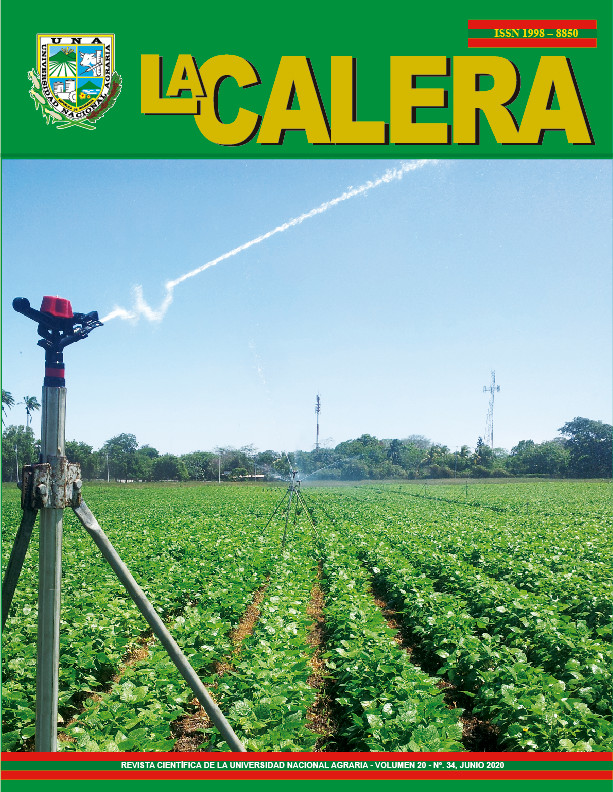Soil conservation agriculture and its effect on water erosion and hydrophysical properties in the Quebrada Arriba hydrographic unit, Yalagüina, 2017
DOI:
https://doi.org/10.5377/calera.v20i34.9773Keywords:
Moisture retention, pins erosion, steep land, dry corridorAbstract
In order to evaluating the effect of land uses, soil cover systems (SCS), agroforestry (SAF), traditional (Tr) and secondary forest (Bs) on water erosion and restoration of soil hydrophysical properties. Soil water infiltration, clay contents, soil organic matter, and the percentage of humidity at field capacity. An experimental trial of divided plots was established in three farms located in the Quebrada Arriba hydrographic unit, Yalagüina-Madriz, Nicaragua. The systems with the greatest surface coverage showed a lower erosion rate of 41.75 tons per ha-1 in the SAF versus 123.08 tons per ha-1 in the traditional systems. Moreover, higher organic matter contents from 10% in the ASA system to 2.98% in the traditional one. At the spatial level the treatments that were located in the lower part of the relief, presented higher percentages of retained moisture and organic matter (MOS) compared to the treatments located in the upper part. Finally, the high clay contents contribute to the increase of the capacity to retain water in the microbasin soil. Therefore, it is necessary to promote technologies that give the soil greater coverage to improve its quality and reduce the rate of water erosion.
Downloads
1429
HTML (Español (España)) 340
EPUB (Español (España)) 232
XML (Español (España)) 564

